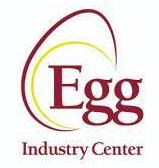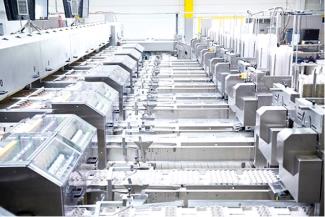 On June 28th, the Egg Industry Center released the 2022 U. S. Egg Processing, Cartoning and Transportation Costs Report (P/C/T). The document compiled by Maro Ibarburu, Lisa Vold and Richard Gates of the EIC incorporates input from Alejandro Plastina of the Department of Economics at Iowa State University.
On June 28th, the Egg Industry Center released the 2022 U. S. Egg Processing, Cartoning and Transportation Costs Report (P/C/T). The document compiled by Maro Ibarburu, Lisa Vold and Richard Gates of the EIC incorporates input from Alejandro Plastina of the Department of Economics at Iowa State University.
The report is an update of the previous 2021 survey. The most recent report includes grade yield loss but these values reflected the confounding arising from high differentials in cost among sizes in 2022 due to HPAI.
 Of the 100 surveys sent to producers, 18 were returned that is in itself problematic. In some cases, only 7 to 9 responses were used in calculations. Since the surveys were anonymous, the claim that the limited number of responses represented 124 million layers or 37 percent of the pre-HPAI hen population is speculative and self-serving. If the U.S. egg industry expects the Egg Industry Center to provide accurate and representative results, then they have the obligation to support the staff of the Center with comprehensive and detailed data as requested.
Of the 100 surveys sent to producers, 18 were returned that is in itself problematic. In some cases, only 7 to 9 responses were used in calculations. Since the surveys were anonymous, the claim that the limited number of responses represented 124 million layers or 37 percent of the pre-HPAI hen population is speculative and self-serving. If the U.S. egg industry expects the Egg Industry Center to provide accurate and representative results, then they have the obligation to support the staff of the Center with comprehensive and detailed data as requested.
There is obviously concern that because the data is submitted to a Land Grant University, accessibility is possible through the Freedom of Information Act. The University of Minnesota overcame this problem by having the principal investigator of a project quantifying antibiotic use having to register an LLC that issued the questionnaires and collected the results.
The usable highlights from the 2023 EIC survey include: -
- With respect to packaging, the median cost of cartons was 12.6 cents per dozen for 12-egg packs and 12.3 cents per dozen for 18-egg packs. Outer packaging added 4.7 cents per dozen for 30-dozen cases (rounded to 0.1 cent) with additional finishing costs of 1.5 cents per dozen. These costs are generally in-line with accepted commercial values assumed to be either fiber or polystyrene foam packs with cardboard outer containers. Obviously, the cost for packaging specialty eggs in PET or custom-designed packs would be higher. It is noted that the cost of outer packaging for 15-dozen outer containers was 4.9 cents per dozen compared to 5.2 cents per dozen for reusable (presumably plastic) containers. Instead of relying on a constant or diminishing 9 to 15 responses for packaging costs, EIC could obtain prices directly from manufacturers with an indication of delivered cost against volume allowing insertion of more representative values for each of the major categories of packaging.
- The median cost of processing for gradable nest run class-1 eggs was 19.3 cents per dozen based on 16 usable responses. There was no breakdown of this significant component as to fixed and variable cost in relation to volume processed or plant location.
- Transportation costs were based on cartoned eggs. The median cost for direct store delivery was 9.4 cents per dozen and to a warehouse, 6.3 cents per dozen.
- Transport cost over 200 miles was 6.1 cents per dozen rising proportionately to 10.6 cents per dozen for 700-mile delivery.
- The estimated median cost of processing eggs sourced in-line and delivered to warehouses was 56.3 cents per dozen, 21 percent higher than the value derived in 2021.
It is reiterated that cooperation from the industry is critical to obtaining accurate and representative data to be incorporated into reports. If the industry does not cooperate, then the Egg Industry Center has little option other than to project costs based on best available information. This would include prices supplied by manufacturers of packing equipment that will probably be more representative than through surveys, projection of fixed and variable operating costs for processing plants based on known capital costs of buildings, installations, graders and equipment, age of plants with prevailing interest rates. Variable operating costs could be based on known labor, power, water, packaging and maintenance values weighted among the six production regions and taking into account the relative numbers of dozens packed. Projections of cost derived from prices from suppliers and USDA sources would be more comprehensive than the current approach using surveys. Cost projections should be duly reviewed and validated by knowledgeable and disinterested representatives from among the production and allied industries. This approach would be more accurate and representative than undertaking surveys requiring statistical manipulation of limited data including trimming of means derived from a handful of responses. The limited number of returns implies potential bias based on the willingness or reluctance to supply data.
The EIC can and should do better to serve the industry. More meaningful reports will however require ingenuity, imagination and above all an appreciation of the needs of end-users.